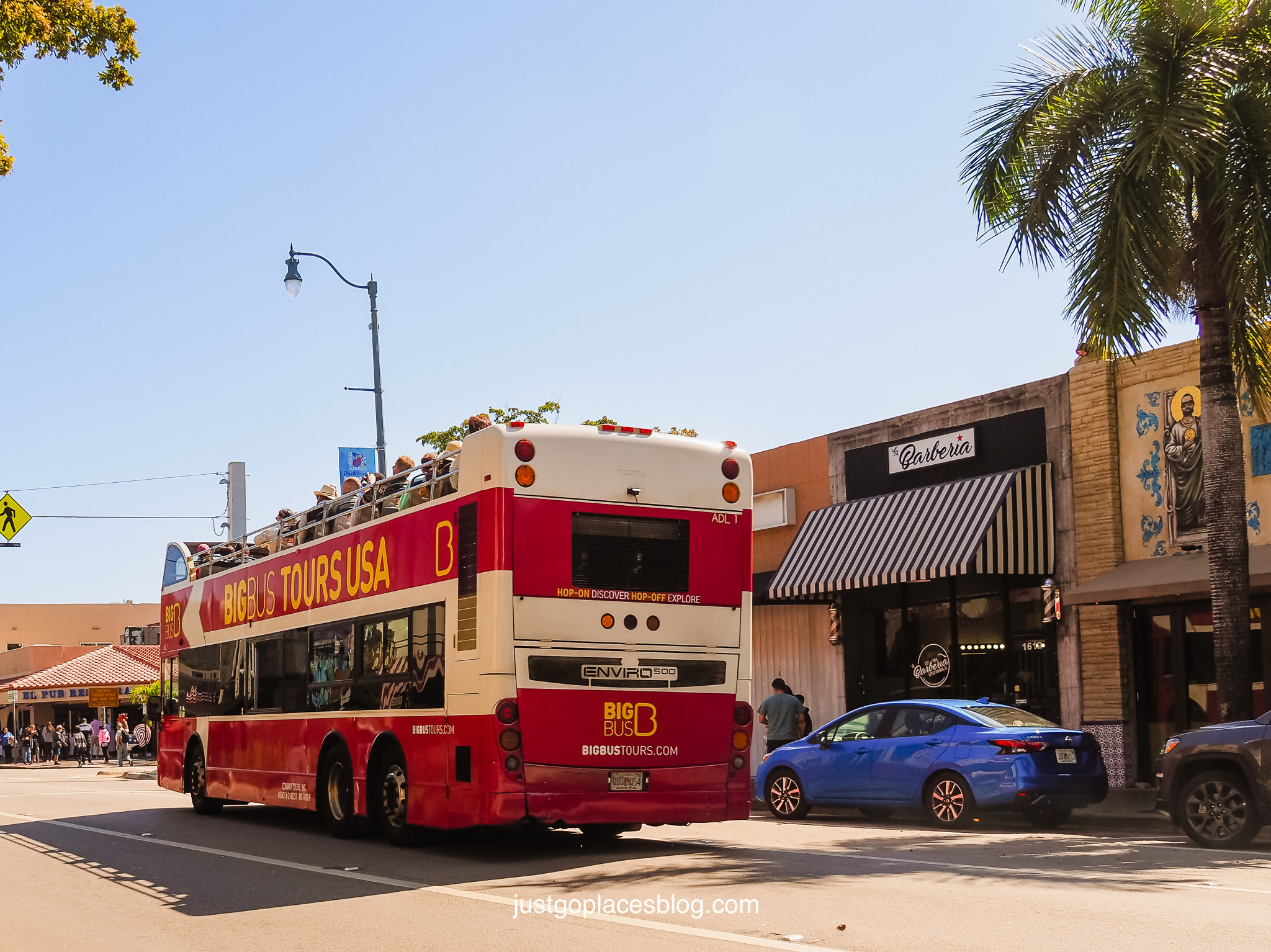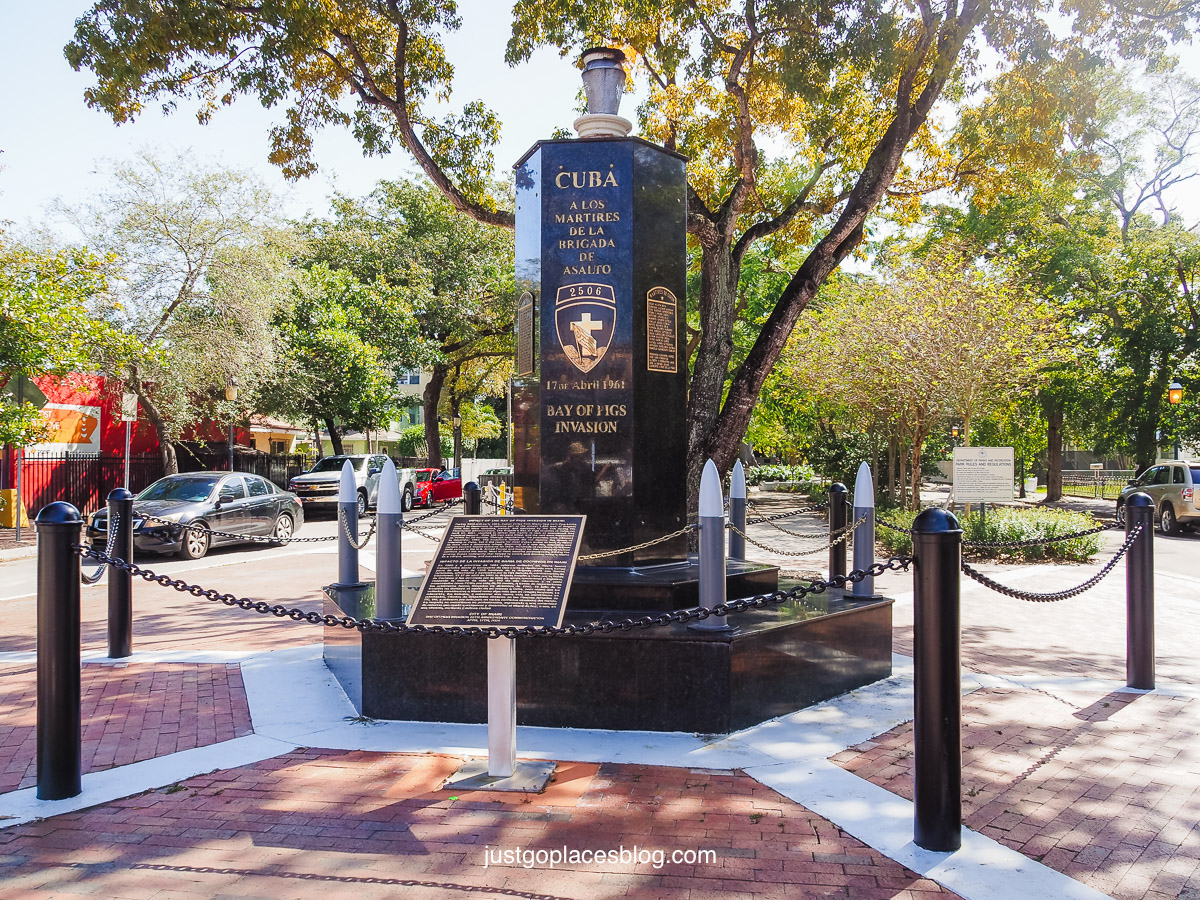Miami is famous for its beautiful beaches, cosmopolitan nightlife and raging contemporary art scene. Make sure though to visit the other Miami, brimming with life and lively Caribbean rhythms from its Haitian and Cuban immigrants. Little Havana, one of the most famous neighbourhoods in the city, is must-visit place in Miami. A food tour of Little Havana will help you understand the Cuban cultural influence on Miami. Not only will you taste great food on Miami Culinary Tours but you will learn about the history and cultural significance of the area.
Contents
Food Tour Little Havana
The epicenter of Miami’s traditional Little Havana neighborhood is the famed Calle Ocho, which boasts numerous Cuban-American restaurants, small businesses, and other cultural activities. Today, the neighborhood retains an overwhelmingly Hispanic population that includes a lot of Cuban exiles. The Cuban population spreads beyond Calle 8 to the house-lined streets where roving roosters wander freely.
The National Trust for Historic Preservation has declared Little Havana a national treasure for its importance to the local community.
Take a Little Havana food tour down this famous street as the best way to taste and smell all the hearty flavors that have made it to Miami from Cuba. Some unmissable dishes are deliciously warm and fluffy Churros and empanadas washed down with hearty Cuban coffee.
Along the way, you will also pass a lot of colourful murals created by local artists. You will also pass the Calle Ocho walk of fame with stars on the pavements celebrating famous Cuban notables. You’ll hear strains of live music from neighbouring restaurants including the famous Ball & Chain and Old’s Havana Cuban Bar.
Miami Culinary Tours
We took a small group Food Tour of Little Havana with Miami Culinary Tours and we thought it was excellent introduction to authentic Cuban food. There are private tours as well that you can arrange with them. They can cater to vegetarians and food allergies on the public tours but you will need to take a private tour if you are a group with vegan diets.
We met at SW 8th Street near Tower Theater and then walked down Calle Oche each way for a bit. The actual walk wasn’t very long but there was a lot of interesting stops along the way. Wear comfortable shoes because this walking food tour is on city sidewalks.
Our tour guide was a Cuban immigrant who knew how to tell a good story and keep everything lively and interesting (even for our teens who also took the tour). She was a local guide and everyone seemed to know her well.
The tours run several times daily and ticket prices are a reasonable $69/adult and $59/child. Miami Culinary Tours also runs a South Beach food tour, a Wynwood food tour and a Design District food tour.
We went back to Little Havana in the evening for some more traditional Cuban foods at Sala’o, a restaurant recommended by the tour guide. Sala’o, also, was excellent and paid homage to that lover of Cuban culture, Ernest Hemingway. Little Havana, is located in the heart of the city, and easy to get to from where we were staying at The Confidante, near Miami’s famed South Beach.
Cuban Culture on a Food Tour Little Havana
A food tour of Miami’s Little Havana neighborhood serves up a cultural tour as well as delicious bites. You will get a look at some of the cultural institutions of the neighborhood that are synonymous with Cuban culture and have been passed down through generations.
Cigar Shops
The simple word “Cuban” is synonymous with the cigar which originated there and the smoking of cigars is an integral part of the Cuban exile culture in Miami to this day. Calle Ocho contains numerous cigar shops and smoking lounges. You can spot a cigar shop by the Cigar Store Native American statue in front of it.
Most shops sell famous brands of Dominican or Honduran cigars and many shops hand roll the cigars on the premises. Federico Empire Boutique Cigar Factory offers tours on Wednesdays and Saturdays featuring Cuban-trained cigar rollers with 20+ years of experience.
Bay of Pigs Monument
Commemorating a pivotal event in Cuba’s rich history, the Bay of Pigs invasion saw Cuban-American soldiers attempt to invade Cuba and return to their homes. The invasion, however, was a tragic failure and over 100 men were killed with some 1,200 taken prisoner on the island.
Luckily the captured soldiers were returned to Miami where their families in the Cuban community were waiting. This monument honors the sacrifice of those lost and their quest to restore freedom to their homeland.
Domino Park
Maximo Gomez Domino Park, an iconic corner of Little Havana is where locals have gathered for years to compete in games of dominoes. Only members are allowed to play but crowds visit Domino Park to watch these nail-biting matches.
Grab a strong cup of cafe Cuban0 or bring your scoop of Azacur ice cream to the park and grab a seat as the games unfold.
Food Tastings on Miami Culinary Tours
We had more than enough food tastings on our Miami Culinary Tours excursion. With everything from starters to ice cream, we sampled plenty of things and also learned about the history of some of the food.
Cuban Coffee
Coffee is taken very seriously in Cuban-American households and is a quintessential part of the daily routine. Forget the standard drip coffee maker, Cuban Coffee is brewed on the stove in a special device called a “cafetero”, a contraption similar to the Italian “Moka pot.”
Cafe Bustelo and Cafe Pilon are the most famous brands of Cuban coffee. These coffees are dark roasted in the Italian style and produce a strong and potent brew. The coffee is served in a demitasse, often with sugar added, and can be mixed with milk to produce the famous “Cafe con Leche.”
Coffee can be a ritual throughout Little Havana and almost every restaurant offers it, often through a window right on the street, like the ventanita at El Pub. We learned though that the local culture is to start your day off with a Cuban coffee and an empanada.
Cuban Sandwich
The Cuban Sandwich has achieved legendary status throughout Florida and has even been exported throughout the United States. The Miami Cuban, which differs somewhat from its cousin the Tampa Cuban, contains layers of ham, roasted pork, swiss cheese, pickles, and mustard.
These ingredients are sandwiched between slices of Cuban bread, which are then buttered and grilled on a panini press. The sandwich is found all over Florida, however, Cafe Versailles on 8th Street makes the most famous version, along with other typical Cuban dishes.
Guarapo Juice
While rum is considered the most famous byproduct of sugar production, guarapo juice is a tasty and unique way to get your sugar fix. Cuba and South Florida are natural growing areas for sugar cane so the juice can be made fresh in both locations.
To make the juice, fresh sugar cane stalks are fed through a juicer and often mixed with lemon and ice. Although sweet, we did not find the drink to be overly sugary. We had guarapo juice at Los Pinarenos Frutera, a local fruit stand. The husband of the owner of the fruit stand is commemorated on the Bay of Pigs Monument nearby.
Cuban Ice Cream
Cuban Ice Cream, referred to as “Mantecado,” in Spanish, is a rich custard-like concoction with hints of vanilla, cinnamon, and nutmeg.
Azucar Ice Cream on 8th Street is the perfect place to try this sinful treat and many other tropical flavors such as guava and cream cheese, flan, and even Cafe con Leche ice cream.
We had guava ice cream which made up for the fact that we did not have the famous guava pastry that I wanted to try. Frankly, with all the assorted small plates, I was as full as if I had a full lunch.
SPREAD THE WORD! PIN THIS TO YOUR TRAVEL PINTEREST BOARDS FOR FUTURE REFERENCE!
We did not receive compensation of any form, monetary or otherwise, from any of the products, services, hotels etc mentioned in this article.
This site generates income via partnerships with carefully-curated travel and lifestyle brands and/or purchases made through links to them at no extra cost to you. More information may be found on our Disclosure Policy.









